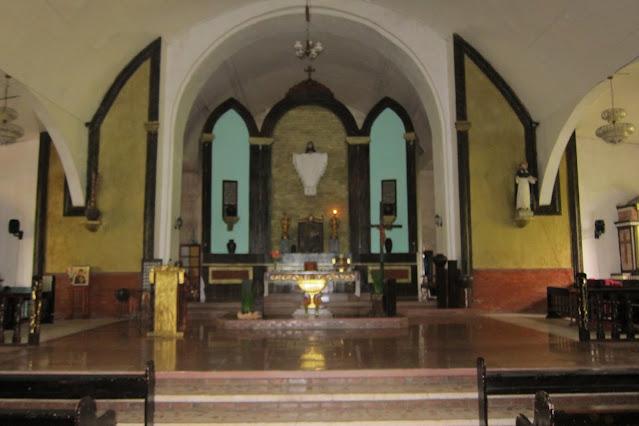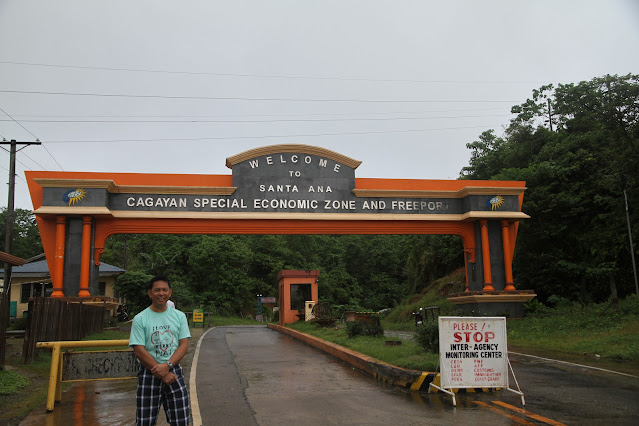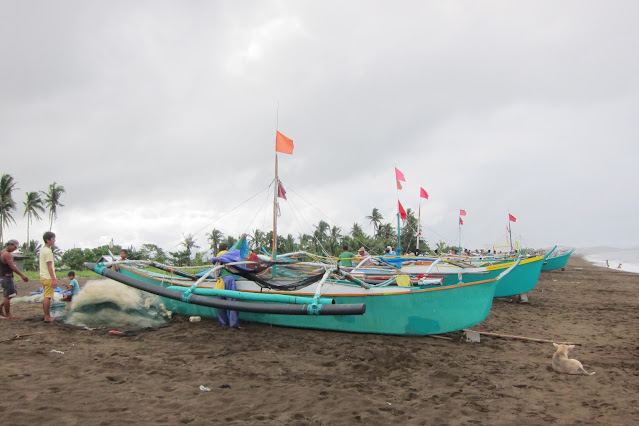TUGUEGARAO
The
Tuguegarao Cathedral in honor of Sts. Peter and Paul was built in 1761 by the
Dominican priest Fr. Antonio Lobato who also compiled the first Ibanag-Spanish
dictionary and laid out and developed the streets of the town. The church was
finished in 1767. In 1910, Tuguegarao was made the seat of the diocese. During the Second World War the church was
heavily damaged and was rebuilt by Bishop Constance Jurgens.
Made
of bricks, the cathedral is outlined in white paint along with its niches,
pillars, entablatures and windows. Beside it is a tall belfry. Easily the
Tuguegarao Cathedral is the biggest church in the whole region.
 |
| The church has just undergone a renovation with richly decorated ceiling and columns. |
 |
| The patio by the side of the Cathedral. |
 |
| The Blessed Sacrament Chapel is found at the ground floor of the convento. |
 |
| The altar retablo |
SAN JACINTO HERMITA, TUGUEGARAO
The Ermita
de San Jacinto is an old chapel built in 1724. While the Tuguegarao church was
being built this chapel was the one used by the people. Now found near the St.
Paul University at the intersection of Mabini and Legaspi streets, the chapel
offers a soothing place of quiet amidst a busy neighborhood. It is enclosed by
a metal fence. The chapel with a simple façade has three arched doorways
embellished with four white columns, a round window and bells atop the façade.
There are benches in front of the chapel to accommodate the overflow of mass
goers.
ST. PAUL UNIVERSITY CHAPEL, TUGUEGARAO
 |
| St. Paul University Chapel which has a striking resemblance to the San Sebastian Church in Manila |
 |
The St. Paul University Chapel as seen from outside the gate of the University.
|
CLERGY RETIREMENT HOME, MADDARULUG, SOLANA, CAGAYAN
The Archdiocese of Tuguegarao has a beautiful place for their retired priests which is located within the compound of the Villa Domingo Renewal Center in Maddarulug, Solana which is less than ten kilometers away from Tuguegarao. Only the retired Archbishop Talamayan and another retired priest resides in the place so far. We were happy to be accommodated for an overnight stay during our visit.
 |
| The Clergy Retirment Home of the Archdiocese of Tuguegarao |
 |
| Main entrance to the retirement home with bas reliefs of the Good Shepherd and Mary |
 |
| Bas reliefs of Sts. Pedro Calungsod, Lorenzo Ruiz, St. Martin de Porres, Mary and Jesus are found near the entrance. |
 |
| An courtyard within the compound |
St. Dominic de Guzman Parish,
Basilica Minore of Our Lady of Piat
Piat, Cagayan (F-1610)
From its façade, the church of Iguig does not look impressive and
in fact does not look that old. However, its antiquity is revealed when one
goes around the back of the church. Three flying buttresses anchor the back of
the church. Likewise some buttresses are also found at its side. Being on top
of the hill the church has a commanding view over the whole town. As an added attraction 14 Stations of the
Cross with brightly colored larger than
life tableaux are spread over the four hectares hilly terrain at the back of
the church. The church dedicated to St. James the Greater was constructed
between 1765 and 1787 by the parish
priest Pedro de San Pedro.
 |
| A simple facade which looks quite modern does not reveal its antiquity until one goes around the church |
 |
| The view from the back of the church with buttresses. |
 |
| With bare ceiling and and some electrical wires hanging. |
 |
| It's quite rare to see an altar painted green. |
 |
| Another view of the side of the church |
 |
| The 14 Stations of the Cross. |
St. Philomena Parish, Alcala, Cagayan (F-1843)
St. Catherine of Alexandria Parish, Gattaran, Cagayan
(F-1823)
St. Peter Gonzales of Thelmo Parish
Archdiocesan Shrine of Our Lady of the Rosary
Aparri, Cagayan (F-1680)
St. Anne Parish, Buguey, Cagayan (F-1598)





St. Hyancith of Poland Parish,
Camalaniugan, Cagayan (F-1595)
St. Dominic de Guzman Parish, Lal-lo, Cagayan (F-1582)
St. Peter the Martyr Parish, Pamplona, Cagayan (F-1757 / 1935)
Sta. Ana, Cagayan
Holy Cross Parish, Ballesteros, Cagayan (1912)
Sto. Niño Chapel, Matarican West, Ballesteros, Cagayan
Holy Guardian Angels Parish, Tuao, Cagayan (F-1604)
St. Dominic de Guzman Parish, Baggao, Cagayan (F-1896)
Duba underground river and cave in Baggao. At the end of the cave there is a waterfalls with a skylight opening.
























































































.jpg)
.jpg)
.jpg)
.jpg)
.jpg)
.jpg)
.jpg)
.jpg)
.jpg)
.jpg)
.jpg)
.jpg)
.jpg)
.jpg)
.jpg)
.jpg)
.jpg)
.jpg)
.jpg)
.jpg)
.jpg)
.JPG)
.JPG)
.JPG)
.JPG)
.JPG)
No comments:
Post a Comment